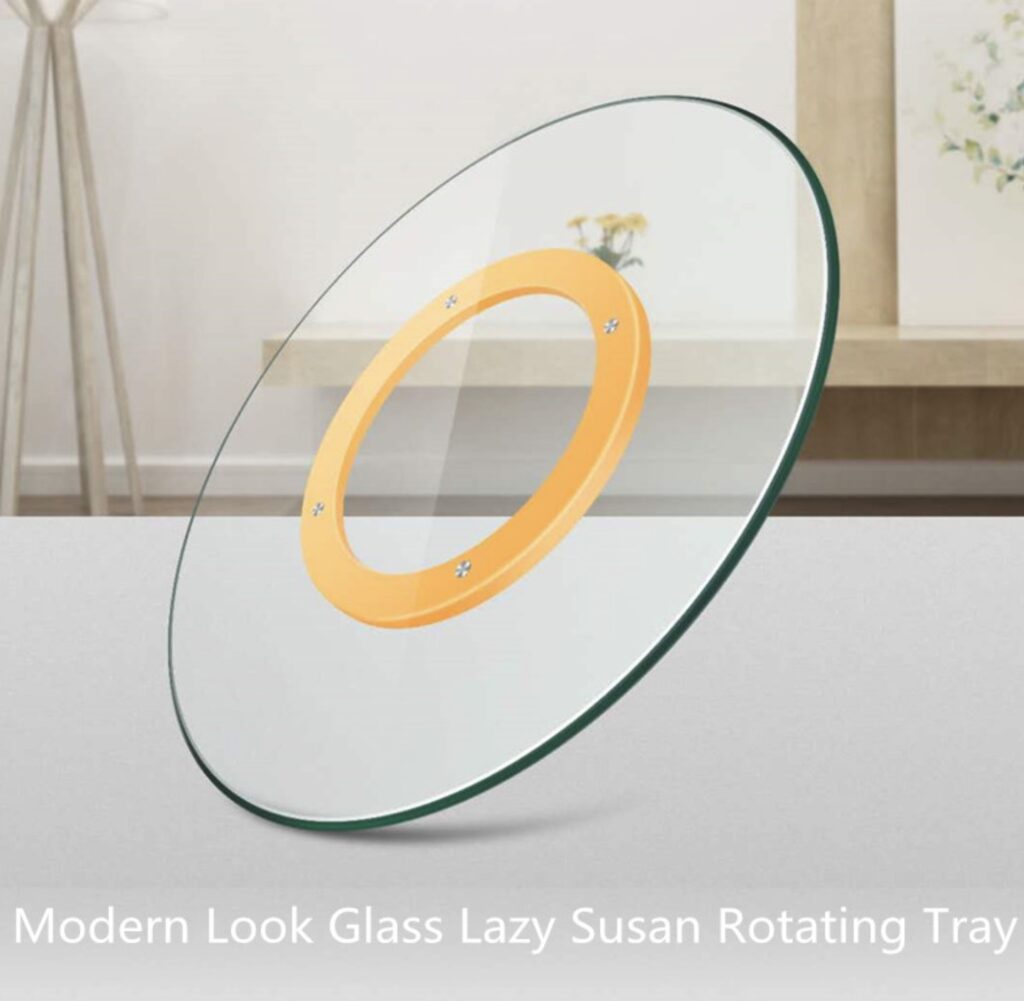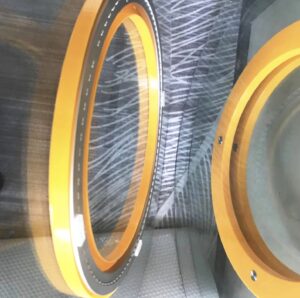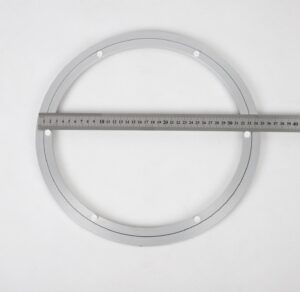As an important tool to improve the convenience and interactivity of dining, the table turntable is mainly divided according to the driving mode and functional characteristics. The following are the three most common types of turntables on the market and their core features:
- Manual turntable
Driving principle: It is completely dependent on human power, and the turntable is driven to rotate by hand force, and the speed is proportional to the thrust.
Features:
Price advantage: Simple structure, low cost, suitable for families or small and medium-sized restaurants with limited budgets
Classic and durable: Made of stainless steel, solid wood or tempered glass, it is easy to maintain and has a long service life.
High flexibility: It can be adapted to tables of different sizes, with a common diameter of 60-80 cm (suitable for tables for 6-10 people)
Applicable scenarios: Family gatherings, traditional Chinese restaurants, fast food restaurants, etc.

- Electric turntable
Driving principle: Built-in motor drive, supports remote control or button control, and realizes automatic uniform rotation.
Features:
Automated experience: No manual operation is required, the speed can be adjusted, suitable for occasions where dishes need to be taken frequently (such as banquets, buffet restaurants)
.
Multi-function expansion: Some models integrate induction cookers and heating functions to keep the temperature of dishes
.
High maintenance cost: Once the motor is damaged, it needs to be repaired as a whole, and attention should be paid to waterproofing and moisture-proofing when cleaning
.
Applicable scenarios: high-end hotels, banquet halls, hot pot restaurants, etc.

3. Non-electric automatic turntable
Driving principle: Adopt mechanical watch movement or spring energy storage structure, and realize intermittent automatic rotation through manual winding.
Features:
Energy saving and labor saving: No electricity is required, it can run automatically after manual energy storage, and it has the advantages of both manual and electric
.
Easy to clean and separate: The turntable and the dining table are detachable for daily care
.
Moderate cost performance: The price is higher than the manual turntable, but much lower than the electric model, suitable for home upgrade use.
Applicable scenarios: family restaurants, small cafes, showrooms, etc.
Supplementary selection dimensions
Material selection:
Tempered glass: Transparent and beautiful, strong anti-slip, common diameter is 70-80 cm
.
Solid wood/rock board: Heavy texture, suitable for Chinese style, requires regular waxing and maintenance
.
Stainless steel: Durable and corrosion-resistant, suitable for industrial style or high-frequency use scenarios
.
Size adaptation:
The diameter of the turntable is usually 25-35 cm smaller than the dining table (such as a 1.5-meter dining table with a 1.1-meter turntable), ensuring space for tableware
.
Customized services can meet special size requirements (such as a large banquet turntable with a diameter of 1.8 meters)
.
Purchase and maintenance recommendations
Priority scene matching: Manual or non-electric automatic models are preferred for families, and electric models are considered for commercial places.
Regular maintenance: Manual turntables need to lubricate bearings, electric models need to check circuits and motors, and non-electric models need to pay attention to waterproofing
.
Safety Tips: Avoid placing high-temperature tableware, keep the electric turntable away from water sources, and avoid hard objects hitting the tempered glass turntable.

By properly selecting the type and material, the dining table turntable can significantly improve the dining experience, taking into account both practicality and aesthetics.

